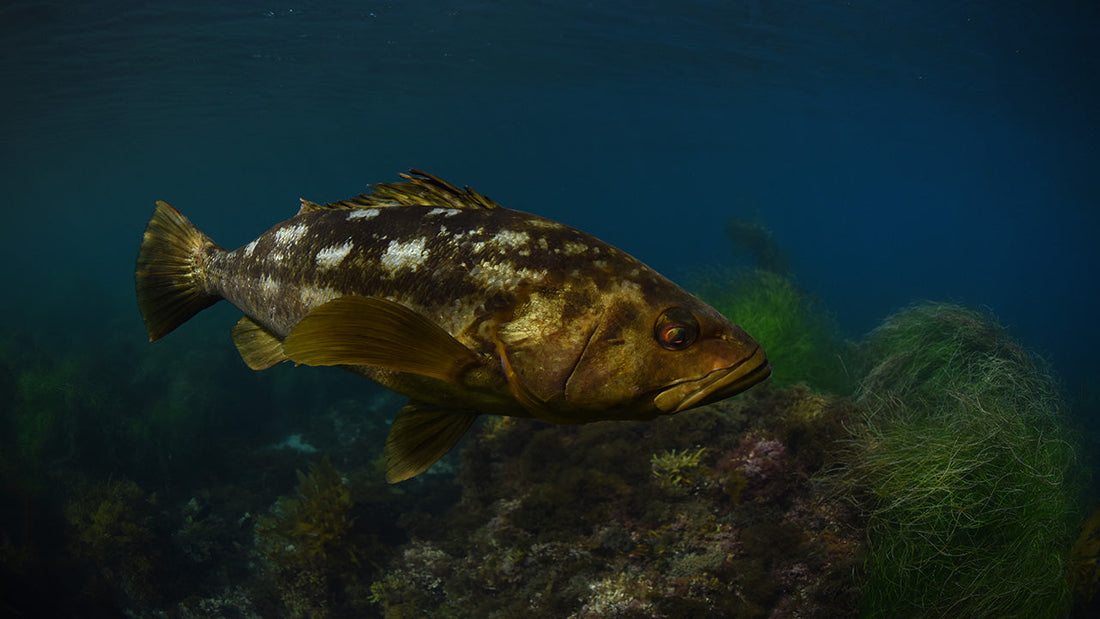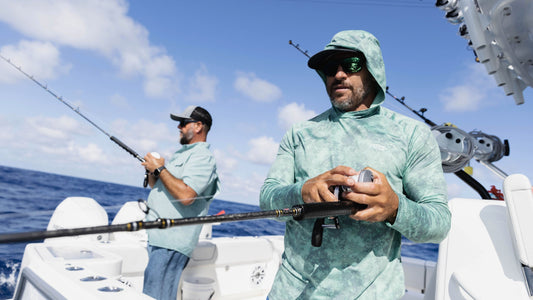
Species Spotlight: Calico Bass
Calico (Kelp) Bass
Paralabrax clathratus

Southern California’s iconic nearshore coastal game fish, calico bass — as kelp bass are widely known — are targeted by a huge population of devotees from San Diego (and south, all around the Baja peninsula) up into central California. Though of modest size, these members of the grouper/sea bass family fight incredibly hard and provide great experiences for people interested in catching them.
Appearance
The kelp bass is a streamlined, classic “bass shape,” with its color predominantly brown and gold to olive green, with intermittent white blotches along the upper sides.

Location & Habitat
As noted, Baja to central California, but sometimes farther north. Kelp bass live up their name, prowling kelp beds to ambush prey, but favors various structure, notably jetties, rockpiles and reefs. Usually the species is found in water to 150 feet.
Size
The IGFA all-tackle world record calico bass is a 14-pound, 7-ounce fish taken off Newport Beach, California, in 1993. Kelp bass are common to several pounds; anything approach double digits can be considered a trophy size. They grow slowly sparking conservation minded regulations on catch limits and size minimums. The Calico bass minimum size is currently 14 inches.
Pros
Widely available in home-range; aggressively strike lures as well as live baits; fine eating.
Cons
Heavily pressured and tightly regulated in SoCal waters; may be hard to find fish of bragging size.

Targeting Calico Bass: A Pro’s Tips
Capt. Barry Brightenburg, whose been catching big kelp bass in Southern California and Baja waters has a few suggestions on what to use to catch calico bass and what is the best place to catch a calico bass:
-
Try fishing below a red tide layer
“We figured out the red tide could be a layer extending just 10 or 15 feet below the surface,” and his anglers started getting into great action fishing beneath thick red tides to which other anglers gave a wide berth.
-
Work the “stringers”
While fishing the up-current edges of kelp beds with surface irons (metal jigs such as a Salas 7X worked on top) or swimbaits, don’t neglect “stringers” — the term for a kelp strand thats growing vertically. Fish deeper when the bass do not want to feed on the surface. A heavy swimbait, jig, or tube bait works well fishing vertical.
-
Fish hard when temps stabilize
“I've caught a ton of bass in 55-degree water,” Brightenburg says, “even though that’s not the norm.” The key is wait until water temps stabilize for at least two or three days, and fish when the temperature isn’t rapidly dropping or rising.






